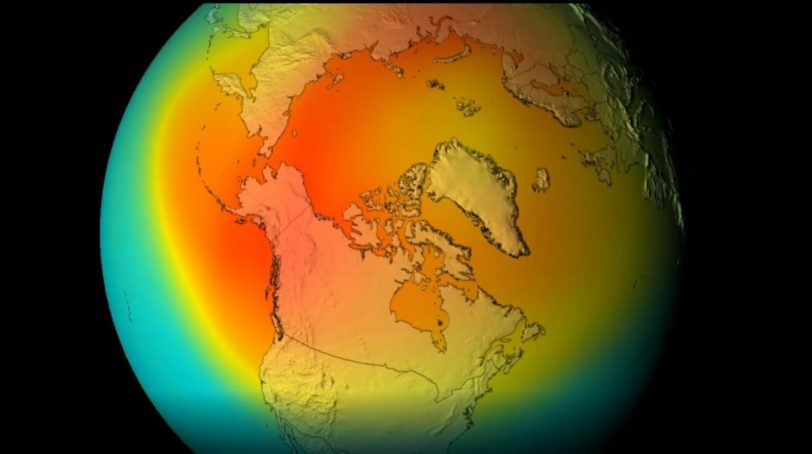The James Webb Space Telescope (JWST), which was launched last December, has been progressively powering up its instruments and unfurling its sun shield, and is now aligning its mirrors in preparation for operation. Within a few months, the most powerful space telescope ever built will set its sights on the stars. Astronomers hope that what JWST sees will change our understanding of the Universe, just as the Hubble Space Telescope did decades ago.
One enticing capability that JWST provides that Hubble does not is the ability to directly image planets orbiting distant stars and potentially detect signs of life.

The ability to detect biosignatures remotely has become a hot topic in recent years. The latest discovery of phosphine in Venus‘ atmosphere in our own solar system sparked speculation that the chemical was produced by a microbial life-form. Similarly, remote sensing experts have proposed that plant life, which generates energy through photosynthesis, could be detected in infrared wavelengths because chlorophyll absorbs visible light but shines brightly in infrared, giving planets covered in foliage a distinct “red edge.” Based on the information stored in the wavelengths of light that reach the telescope lens, a single-pixel photo of a distant planet may just contain enough information to tell us if biological life exists there.
What about intelligent life, though? Could the JWST detect civilizations like ours? How would we go about looking for them? Understanding what humanity’s presence on Earth looks like from space provides the best answers. We emit waste heat (from industry and homes, for example) and artificial light at night, but perhaps more importantly, we produce chemicals that fill our atmosphere with compounds that would not be present otherwise. These man-made atmospheric constituents could be the thing that alerts a distant alien species scanning the galaxy with their own powerful telescope.

A recent paper, available as a preprint on ArXiv, investigated the possibility of using JWST to search for industrial pollutants in the atmospheres of exoplanets. The paper concentrated on chlorofluorocarbons (CFCs), which are produced industrially on Earth as refrigerants and cleaning agents. CFCs were notorious for causing a massive hole in the Earth’s ozone layer in the 1980s, before an international ban on their use in 1987 helped reduce the level of CFCs to less harmful levels. If found elsewhere in the galaxy, these “potent greenhouse agents with long atmospheric residence times” are almost certainly the result of a civilization capable of rampant industrialization.
In other words, some of humanity’s worst byproducts—our pollution—might be the very thing that makes us detectable. And it implies that we may be able to find other species capable of treating their own planet’s atmosphere with the same disregard.
JWST’s CFC detection capabilities have some limitations. The signal will be drowned out if a planet’s star is too bright. The telescope will have the most success looking at M-class stars, which are dim, long-lived red dwarfs. TRAPPIST-1, a red dwarf 40 light-years away with several Earth-sized planets orbiting within its habitable zone, is a nearby example. JWST would be able to detect CFCs on TRAPPIST-1’s planets because the dim star would not drown out the CFC signature in the same way that our sun (a G-type star) would. A JWST-like telescope at TRAPPIST-1, on the other hand, would be unable to detect Earth’s CFCs because our sun is simply too bright.

Unfortunately, M-class stars are not usually conducive to life because they are unstable when they are young, emitting powerful solar flares that could easily exterminate any nascent life on nearby planets. They do, however, tend to calm down as they get older, so it’s not impossible. It simply means that we should temper our expectations.
Whatever we find, or don’t find, out there, the fact that we are about to have the ability to look at all is a game changer. As the paper concludes, “with the launch of JWST, humanity may be very close to an important milestone in SETI [the Search for Extra-Terrestrial Intelligence], one where we are capable of detecting from nearby stars not just powerful, deliberate, transient, and highly directional transmissions like our own (such as the Arecibo Message), but consistent, passive technosignatures of the same strength as our own.”
READ MORE: Life on Alien Planets Could Be More Diverse Than on Earth



